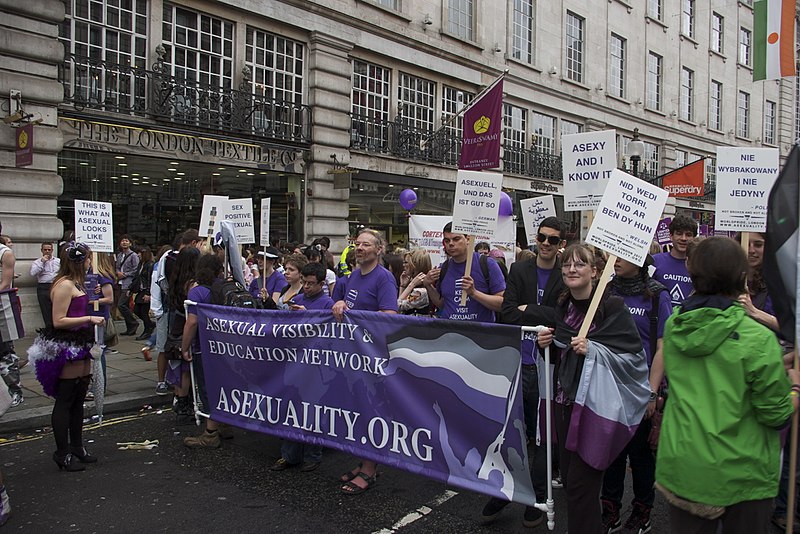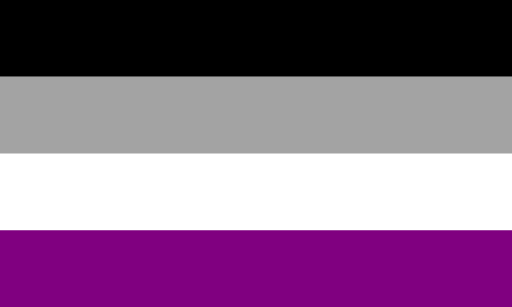By Sarah Cosgriff, Project Worker for Schools OUT UK

What is Ace Week?
Ace Week is an international campaign dedicated to raising the awareness and expanding education of asexuality. It will be held between the 24th October – 30th October this year.
What is Asexuality?
Asexuality is a sexual orientation and it describes experiencing little to no sexual attraction to others. There are different identities and labels on a spectrum, such as:
- Asexual: someone who experiences little to no sexual attraction
- Demisexual: someone who only experiences sexual attraction when a strong emotional bond has been formed
- Grey-asexual (or grey-ace): someone who identifies in the grey area between asexuality and allosexuality. E.g. they could experience attraction rarely or under certain circumstances
The word “ace” can be used to describe a person on the asexual-spectrum (ace-spec is also used).
Some research suggests that approximately 1% of the population is asexual, but it could be more than this. One study by the Trevor project showed that 10% of queer youth identified as asexual or on the asexual-spectrum.
Some people identify on the asexual-spectrum and identify as other LGBTQ+ identities. For example, someone can be panromantic and asexual (experiencing romantic attraction towards others and not limited by gender, and experiencing little to no sexual attraction). In the 2018 asexual community survey, 16.9% of respondents were transgender.
Misconceptions
Asexuality is an often misunderstood and lesser-known sexual orientation.
There are many assumptions, such as:
- It is a choice
- It is a lack of sex drive
- A person hasn’t met the right person yet
- It is the same as aromanticism, which is when you experience little to no romantic attraction
- It is because of a medical condition
- It is because of a fear of intimacy
- Asexual people do not experience oppression or prejudice. Read more about hate crimes towards asexual people on Galop’s website.
Asexual History
Here some dates from asexual history. Note that our way of describing people on the asexual-spectrum and the language we use has changed over time.
1869
The first time we see any references to asexuality was in a pamphlet which was given out by Karl-Maria Kertbeny in protest to Prussian Sodomy Law. “Monosexual” was a term used in this pamphlet, in which Kertbeny also coined the terms heterosexual and homosexual.
1948
Category “X” is part of the Kinsey Scale by Alfred Kinsey and it describes people who report no socio-sexual contacts or reactions.
1972
Lisa Orlando and Barbara Getz published The Asexual Manifesto, distributed by the New York Radical Feminists.
1997
“My life as an amoeba” is an article published by Zoe O’Reilly in which many found they identified with it.
2001
The Asexuality Visibility and Education Network (AVEN) was set up by David Jay. The website has the biggest online asexual community and signposts to resources. This is where some of the community language developed, for example demisexual was coined by user sonofzeal.
2010
The asexual flag was created through a competition on the AVEN forums, created by user standup. It features a black stripe (representing asexuality), grey stripe (representing grey-asexuality), white stripe (representing non-asexual partners and allies) and purple stripe (representing commun
What is Ace Week?
Ace Week is an international campaign dedicated to raising the awareness and expanding the knowledge of asexuality. It will be held between the 24th October – 30th October this year.
What is Asexuality?
Asexuality is a sexual orientation and it describes experiencing little to no sexual attraction to others. There are different identities on the asexual-spectrum, such as:
- Asexual: someone who experiences little to no sexual attraction.
- Grey-asexual (or grey-ace): someone whose experiences are related to asexuality but are not fully described by the word asexual. This can describe a specific identity or used as an umbrella term and can describe a range of experiences, e.g. experiencing sexual attraction rarely.
- Demisexual: someone who only experiences sexual attraction when a strong emotional bond has been formed. This is an identity under the grey-asexual umbrella.
The word “ace” can be used to describe a person on the asexual-spectrum (ace-spec is also used).
Some research suggests that approximately 1% of the population is asexual, but it could be more than this. One study by the Trevor project showed that 10% of queer youth identified as asexual or on the asexual-spectrum.
Some people identify on the asexual-spectrum and identify as other LGBTQ+ identities. For example, someone can be panromantic and asexual (experiencing romantic attraction towards others regardless of gender, and experiencing little to no sexual attraction).
Misconceptions
Asexuality is an often misunderstood and lesser-known sexual orientation.
There are many assumptions, such as:
- It is a choice
- A person hasn’t met the right person yet
- It needs to be ‘fixed’
- It is because of a fear of intimacy
- Asexual people do not experience oppression or prejudice. Read more about hate crimes towards asexual people on Galop’s website.
- It is the same as aromanticism, which is when you experience little to no romantic attraction (note that although these identities describe different experiences, some people are both aromantic and asexual)
Asexual History
Here some dates from asexual history. Note that our way of describing people on the asexual-spectrum and the language we use has changed over time.
1869
The first time we see any references to asexuality was in a pamphlet which was given out by Karl-Maria Kertbeny in protest to Prussian Sodomy Law. “Monosexual” was a term used in this pamphlet, in which Kertbeny also coined the terms heterosexual and homosexual.
1948
Category “X” is part of the Kinsey Scale by Alfred Kinsey and it describes people who report no socio-sexual contacts or reactions.
1972
Lisa Orlando and Barbara Getz published The Asexual Manifesto, distributed by the New York Radical Feminists.
1997
“My life as an amoeba” is an article published by Zoe O’Reilly in which many found they identified with it.
2001
The Asexuality Visibility and Education Network (AVEN) was set up by David Jay. The website has the biggest online asexual community and signposts to resources. This is where some of the community language developed, for example demisexual was coined by user sonofzeal.
2010
The asexual flag was created through a competition on the AVEN forums, created by user standup. It features a black stripe (representing asexuality), grey stripe (representing grey-asexuality), white stripe (representing non-asexual partners and allies) and purple stripe (representing community).
ity).

In the same year, there was the first Ace Week (originally named Asexual Awareness Week) which has been held every year since on the last week of October, started by Sara Beth Brooks.
2013
The DSM-5 was published this year in which asexuality was specified to not be a disorder for the first time. Even though this was a step in the right direction, there are still issues with DSM-5.
2015
The UK had its first openly asexual local election candidate, George Norman. In an interview, he talked about how asexuality should be included in the UK equality laws. There are some US states which have asexuality included in their equality laws.
2019
Yasmin Benoit creates the #ThisIsWhatAsexualLooksLike hashtag on social media to increase the visibility of asexual people and to show the diversity of asexual people. In the same year, she appeared on the cover of Attitude, becoming the first openly asexual woman to be featured on a magazine cover in the UK.
